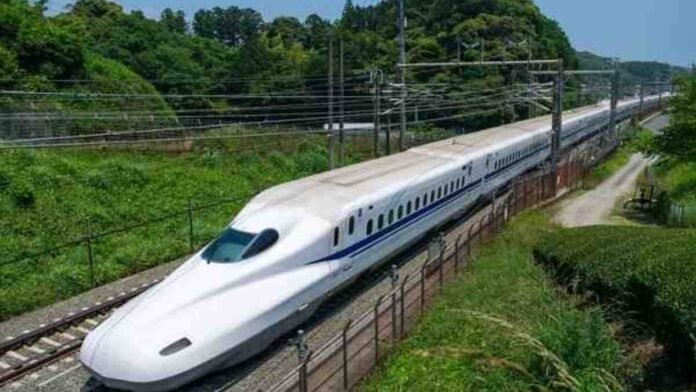Maharashtra Deputy Chief Minister Devendra Fadnavis has confirmed that the much-anticipated Mumbai-Ahmedabad bullet train project is on track for completion by the end of 2028. While addressing the Maharashtra Legislative Council, he expressed optimism about the project’s progress—especially in Gujarat—and also criticized the previous Maha Vikas Aghadi (MVA) government for causing delays.
India’s first high-speed rail line, the bullet train project is a joint venture between India and Japan. It is currently under construction by the National High-Speed Rail Corporation Limited (NHSRCL). Spanning around 508 kilometers, the corridor will link Mumbai and Ahmedabad, reducing travel time from seven hours to just two.
Fadnavis accused the MVA government (2019–2022) of stalling necessary approvals and slowing land acquisition. According to him, these setbacks delayed the project by over two and a half years and increased costs due to inflation and higher loan interest rates.
The ₹1.08 lakh crore project aims to boost infrastructure and economic activity across western India. Japan is financing a large portion of it through a soft loan. Work in Gujarat has moved quickly, with a 50-kilometer stretch expected to become operational by 2026. In contrast, Maharashtra initially fell behind. However, Fadnavis noted that land acquisition and civil construction have recently picked up speed in areas like Virar and Boisar.
One of the most technically challenging parts of the project is the Bandra Kurla Complex (BKC) station in Mumbai. It will be the corridor’s only underground station and is scheduled for completion by March 2028. The full route will feature 12 stations, including Surat, Vapi, Vadodara, and Thane.
Once finished, the bullet train will transform India’s rail network. It will offer fast, modern, and efficient travel while easing road and air congestion between Mumbai and Ahmedabad. It also holds promise for strengthening regional economic ties.
With the 2028 deadline fast approaching, the next few years will be crucial—especially for Maharashtra. The state’s ability to maintain its renewed pace will play a key role in meeting the project’s ambitious target.



